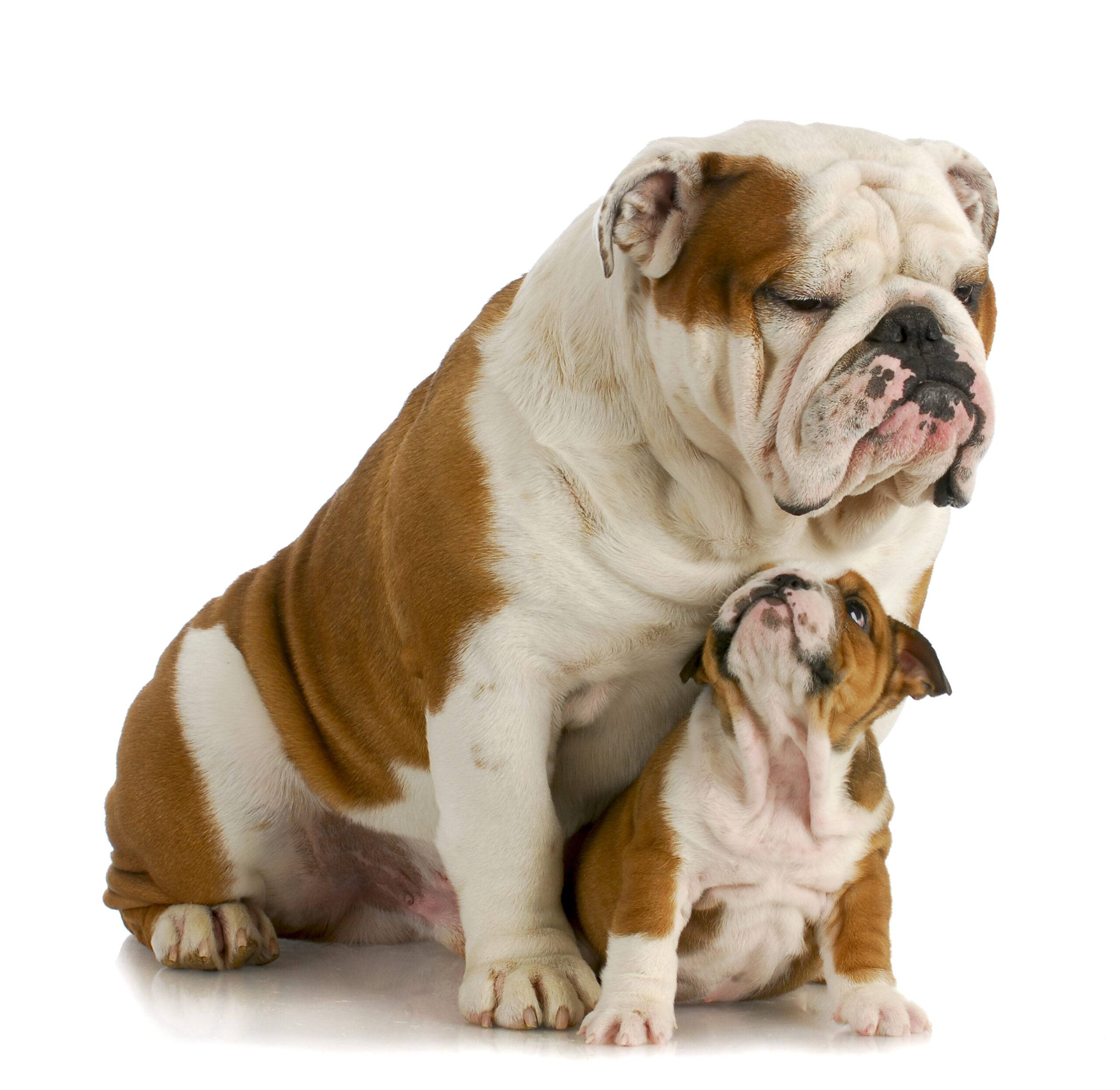Last Updated on May 10, 2025 by Pauline G. Carter
Dogs can get pregnant as early as six months old, once they reach sexual maturity. Female dogs can become pregnant as early as six months old when they reach sexual maturity.
This means that once they have a heat cycle, typically around this age, they are capable of becoming pregnant. It is important to note that while dogs can technically get pregnant at this young age, it is generally advisable to wait until they are older and more mature before breeding them, as early pregnancies can carry health risks.
Dog owners should consult with a veterinarian to determine the best age to breed their dog, taking into consideration factors such as breed, size, and overall health.

Credit: banixx.com
Factors Affecting The Age Of Sexual Maturity
Factors affecting the age of sexual maturity in dogs play a vital role in determining when they can get pregnant. These factors include breed, size, genetics, hormonal balance, and overall health. It’s important to understand these factors to ensure the well-being of the dog and make informed decisions regarding breeding.
The age at which a dog reaches sexual maturity can vary depending on several factors. Understanding these factors can help dog owners make informed decisions about breeding, spaying, and neutering their pets. Let’s take a closer look at the key factors that influence the age of sexual maturity in dogs.
Size And Breed Specifics
The size and breed of a dog play a significant role in determining the age of sexual maturity. Here are some points to consider:
- Different breeds have different growth rates and reach sexual maturity at varying ages.
- Smaller dog breeds, such as Chihuahuas and Shih Tzus, tend to reach sexual maturity earlier, typically between 6 to 9 months of age.
- Larger breeds, such as Great Danes and Saint Bernards, may take longer to reach sexual maturity, often around 12 to 24 months.
- Medium-sized breeds, like Labradors and Border Collies, generally fall somewhere in between, reaching maturity between 9 to 12 months.
Health And Nutrition
A dog’s overall health and nutrition also play a crucial role in their sexual maturity timeline. Consider the following factors:
- Proper nutrition and a balanced diet are essential for healthy growth and development.
- Malnutrition or deficiencies in vital nutrients can delay sexual maturity in dogs.
- On the other hand, excessive or rapid weight gain can also negatively impact a dog’s maturity rate.
- Quality dog food, suitable for the specific breed and age, coupled with regular vet check-ups, will help ensure healthy growth and development.
Environmental Factors
Various environmental factors can influence the age of sexual maturity in dogs. Here’s what you should know:
- Socialization and interaction with other dogs can affect a dog’s development, including their sexual maturity.
- Extreme environmental conditions, such as heat or cold, may delay sexual maturity in some cases.
- Stressful living conditions or frequent changes in the environment can also impact the timing of sexual maturity.
- Providing a stable and comfortable living environment for your dog can help ensure a healthy and timely transition to sexual maturity.
Understanding the factors that affect the age of sexual maturity in dogs is crucial for responsible pet ownership. By considering the size and breed specifics, prioritizing health and nutrition, and creating a positive environment, dog owners can help their pets develop and mature in a healthy and timely manner.
Physical And Behavioral Changes
Dogs can get pregnant as early as six months old, but it is recommended to wait until they are at least one year old. At this age, dogs have reached physical and behavioral maturity, reducing potential risks during pregnancy and childbirth.
Dogs, like humans, go through various physical and behavioral changes when they are pregnant. These changes are important indicators that can help determine if your furry friend is expecting puppies. Let’s take a closer look at some of the common physical and behavioral changes to look out for:
Swelling And Discharge:
- Swollen Vulva: One of the early signs of pregnancy in dogs is a swollen vulva. This swelling is caused by increased blood flow to the area.
- Vaginal Discharge: You may notice a clear or slightly bloody discharge from your dog’s vagina. This is known as estrus discharge and is a normal part of the pregnancy process.
Increased Urination And Restlessness:
- Frequent Urination: Pregnant dogs often experience an increase in urination. This is due to the hormonal changes in their body that result in an increase in blood flow to the kidneys.
- Restlessness and Nesting Behaviors: As their due date approaches, pregnant dogs may become restless and exhibit nesting behaviors. They may start digging or rearranging their bedding to create a comfortable space for their impending puppies.
Changes In Behavior:
- Increased Appetite: Pregnant dogs may have an increased appetite and may start eating more than usual. This is because their body requires extra energy to support the developing puppies.
- Sudden Weight Gain: As pregnancy progresses, you may notice a gradual increase in your dog’s weight. This is a result of the growing puppies and the changes happening in your dog’s body.
- Protective and Maternal Instincts: Pregnant dogs may display protective behaviors towards their belly or puppies. They may become more cautious, alert, and affectionate during this time.
Remember, every dog is unique, and not all dogs will show the same physical and behavioral changes during pregnancy. If you suspect that your dog may be pregnant, it’s always best to consult with your veterinarian for a proper diagnosis and guidance.
Stay tuned for our next section where we’ll discuss the signs and duration of pregnancy in dogs.
Optimal Age For Reproduction
Dogs can become pregnant as early as six months of age, although it is advisable to wait until they are at least one year old to ensure they are physically and mentally mature enough to handle pregnancy and motherhood. The optimal age for reproduction in dogs can vary depending on the breed and individual health considerations.
Many dog owners wonder about the ideal age for their furry companion to start reproducing. While every dog is unique and the appropriate time for breeding may vary, there are some important factors to consider when determining the optimal age for reproduction.
This section will delve into the health and development considerations, the breeding process for first-time dogs, and the potential risks and complications involved.
Health And Development Considerations
- Physical maturity: Dogs typically reach sexual maturity between 6 to 9 months of age, but this can vary depending on the breed. It is crucial to ensure that both male and female dogs have attained full physical maturity before considering breeding.
- Emotional maturity: Just like humans, dogs also go through emotional development. It is recommended to wait until a dog has achieved emotional maturity, which usually occurs between 1 to 2 years of age. This ensures they are mentally prepared to handle the responsibilities of parenthood.
- Genetic health screenings: Before breeding, it is vital to conduct comprehensive genetic health screenings to rule out any inherited health conditions. This helps to ensure that the offspring will be healthy and reduces the risk of passing on genetic disorders.
- Overall health assessment: Prior to breeding, both the male and female dogs should undergo a thorough health evaluation by a veterinarian. This includes confirming they are free from any underlying health issues and are up to date on vaccinations.
Breeding For The First Time
- Pre-breeding preparations: Before breeding, both male and female dogs should undergo a pre-breeding examination to assess their overall health. This includes checking for any underlying health conditions or infections that could affect the success of the breeding process.
- Timing is crucial: To increase the chances of successful mating, it is essential to determine the female dog’s optimal breeding time. This can be achieved through regular monitoring of her reproductive cycle and using diagnostic tools, such as vaginal cytology or progesterone testing.
- Introduction and supervision: When introducing the male and female dogs for mating, it is essential to closely supervise the process to ensure they are both comfortable and safe. Proper introductions and ongoing supervision can help minimize risks and increase the chances of successful breeding.
Risks And Complications
- Pregnancy risks: Female dogs can experience various pregnancy-related complications, such as gestational diabetes, uterine infections, or small litter size. Regular veterinary check-ups throughout the pregnancy can help identify and address any potential risks.
- Complications during delivery: Just like in humans, dogs can face complications during the delivery process. These can include obstructed labor, prenatal death, or the need for cesarean sections. It is crucial to have a veterinarian on standby during the birthing process to intervene if any issues arise.
- Postpartum care: After giving birth, both the mother and her pups require careful postpartum care. This includes monitoring for any signs of infection, providing proper nutrition, and ensuring a clean and comfortable environment for the entire litter.
Breeding dogs is a significant responsibility that should be approached with meticulous planning and consideration for the well-being of both the parents and potential offspring. By adhering to the appropriate age recommendations, conducting necessary health screenings, and being prepared for potential risks and complications, dog owners can make informed decisions regarding the optimal age for their dogs to start reproducing.
Frequently Asked Questions Of At What Age Can Dogs Get Pregnant?
At What Age Can Dogs Start Getting Pregnant?
Female dogs can start getting pregnant as early as 6 months old, but it’s best to wait until they reach 1 year old to ensure they are fully matured and able to handle pregnancy.
How Do I Know If My Dog Is Ready To Breed?
Look for signs such as a change in behavior, a swollen vulva, and a receptive stance when approached by male dogs. It’s advisable to consult a veterinarian to determine the optimal time for breeding.
What Are The Risks Of Pregnancy In Young Dogs?
Pregnancy in young dogs can lead to complications such as low birth weights, premature labor, and an increased risk of health issues for both the mother and the puppies. It’s important to consider the risks carefully.
Can Older Dogs Still Get Pregnant?
Yes, older dogs can still get pregnant, but as they age, their fertility decreases, and the risks associated with pregnancy and childbirth increase. It’s recommended to consult with a veterinarian before considering breeding an older dog.
How Long Is A Dog’S Gestation Period?
On average, a dog’s gestation period is around 63 days, but it can range from 58 to 68 days. Monitoring your dog closely and being prepared for potential complications is essential during this time.
Should I Spay My Female Dog To Prevent Unwanted Pregnancies?
Spaying your female dog is highly recommended to prevent unwanted pregnancies and numerous health benefits. It eliminates the risk of certain reproductive cancers and helps control the overpopulation of dogs in shelters.
Conclusion
Dogs reaching sexual maturity can vary depending on their breed and size. Smaller dogs tend to mature earlier, usually between six to nine months, while larger dogs may not reach sexual maturity until they are one to two years old.
It is important for dog owners to be aware of the signs and take necessary steps to prevent unwanted pregnancies. Spaying or neutering your dog is highly recommended to avoid health risks and behavioral issues associated with pregnancy. Consulting with a veterinarian is crucial to determine the best time for your dog to undergo the procedure.
Responsible pet ownership includes managing your dog’s reproductive health, whether it’s to prevent unwanted pregnancies or to plan a well-thought-out breeding program. By being proactive and informed, you can ensure the overall well-being of your furry companion, providing them with the best care possible.

